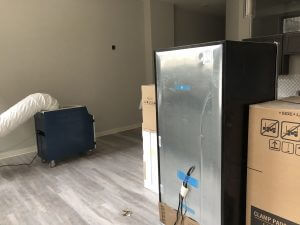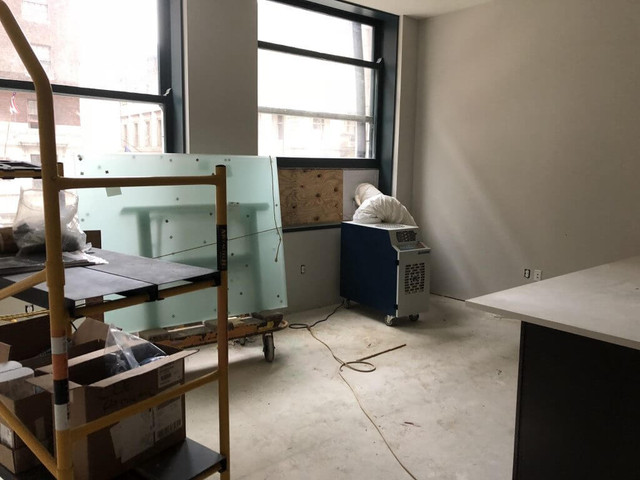Giving Your HVAC System a Hand During Construction with Dehumidification
Posted by Matt Milos on May 31st 2019
It has been a very wet spring (understatement of the year, I know). Delays abound both outdoors and indoors, and there's no question why.
Outdoor work continues at a sporadic pace due to rain, causing delays in the completion of roofs and windows. This, in turn, further complicates matters by raising internal humidity levels. With RH readings in the high 80s to low 90s, indoor work starts to suffer. Swelling wood, drywall delays, slow finishes—all can hurt indoor work as much as rain does outdoor work.
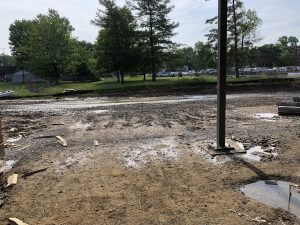
Frequent spring rain can wreak havoc on a construction schedule.
To many, one solution is to simply start the permanent HVAC system.
It seems like a no-brainer: it's already on-site, and it's built to control moisture and temperature, right? Yes, but the results may not be what you need them to be. Having visited several job-sites with this plan, I can tell you that in most cases you will be disappointed. But why?
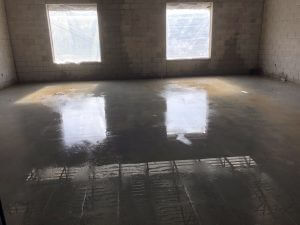
HVAC systems may be built for climate control, but they may not be enough during construction.
The answer is simple: load.
Yes, an HVAC system is designed to pull moisture and hot air from a building, but only under a very specific set of criteria. In order to determine the right amount of AC for your building, a contractor will do a Manual J calculation. This considers factors which affect a building’s ability to retain heat and how much air it needs to stay cool. These can include a building’s square footage, exposure to sunlight, insulation, and more. None of these factors, however, take construction conditions into account.
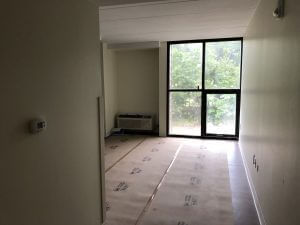
The added stress of construction conditions may be more than a structure's HVAC is built to bear.
Consider the problem we mentioned at the beginning: heavy rain on an only partially-enclosed structure.
Add to that high traffic in and out of the building and equipment that adds more moisture and heat, and you start to see the problem. Simply put, the system cannot keep up with a demand it was not built to handle.
Fortunately, the solution is simple and relatively inexpensive.
By supplementing the permanent system with temporary dehumidification and air-conditioning equipment contractors can easily bring projects back on schedule. Even the best systems need a little help under intense conditions. If you can give your HVAC a hand, you'll be well on your way back on schedule and budget.
